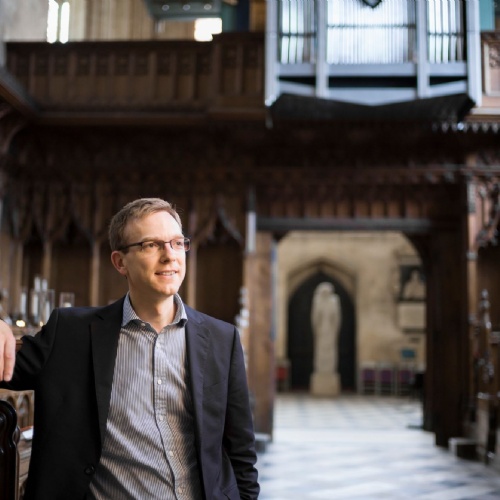50th Birthday recital

This year sees the fiftieth anniversary of the Grant, Degens and Bradbeer organ in New College Chapel. To commemorate the occasion, Robert Quinney, our Director of Music is performing a Birthday Recital at 8.30pm on 23rd November. Below are some of Robert's thoughts on this special occasion:
Our organ was the magnum opus of this short-lived firm, and in its early years made a huge impact through concerts, broadcasts and recordings. But in spite of its fame and high reputation, few British builders sought to emulate it: indeed, trends in organ building in the decades following 1969 may be seen as a reaction against the postwar ‘neo-Classical’ movement, of which the New College organ was perhaps the high-watermark in this country. So it is a rather extraordinary instrument, which, following its restoration in 2014 by Goetze and Gwynn, speaks with an individual voice: idiosyncratic but bold, and remarkably successful in a wide range of repertoire, including choral accompaniments.
What makes the New College organ special? The most striking thing about the organ for most who encounter it is probably its appearance: many who have never heard it will have seen it as the spiky lowering backdrop to scenes in the recent television adaptation of His Dark Materials. The case, designed by George Pace, is in a sort of Bauhaus Gothic. Form follows function: each division of the organ is contained in a discrete tone cabinet (the so-called Werkprinzip), with little decoration. Meanwhile, the steep angles respond to Scott’s chapel roof, and the glass shutters of the Swell division are, perhaps, a reference to the Samuel Green case of 1776, which had a lozenge-shaped hole through which the Reynolds window could be seen (though only, one imagines, from the sanctuary).
To mark the anniversary (a little late, since the organ was actually dedicated in May 1969), I will be giving a recital later this month—appropriately enough, on St Cecilia’s Day, 22 November. My programme seeks to demonstrate the success with which the organ deals with diverse parts of the repertory: music from 16th century England, 17th century North Germany and France, and the eclectic voices of Anton Heiller (the great Bavarian organist of the mid-20th century) and – of course – J. S. Bach.
